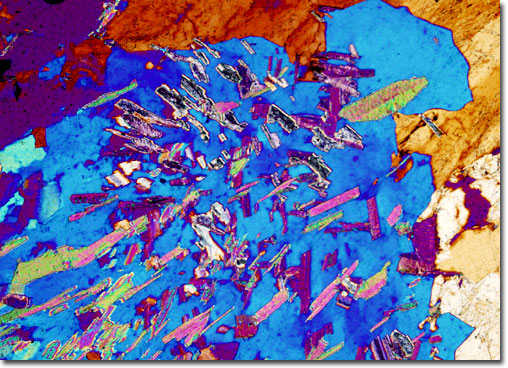|
Typically transparent to translucent, although it may exhibit white, silver, brown, green, or yellow hues, the color of muscovite is dependent upon its iron content. Thin sheets of the mineral, which can be found worldwide, are quite flexible and were formerly used as windowpanes in the Muscovy region of Russia. This usage led to the material being commonly referred to as Muscovy glass, a term which is the origin of the modern name of the mineral. The most prevalent current use of muscovite is as an insulating material, a function it is well suited for due to its low iron content.
|
